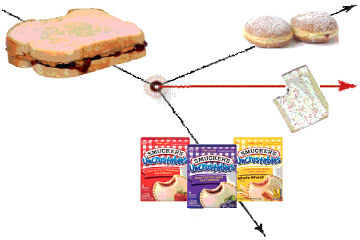What I’ve Learned:
“Ytterbium, utterbium, we all terb for ytterbium!”
You might see “ytterbium” and think it sprang from some Scrabble champ’s wet dream, or that it’s a young left winger drafted by the Winnipeg Jets. And it probably is. But also, it’s a little more.
Specifically, ytterbium is a chemical element — atomic number 70, if you’re scoring at home — and a member of the lanthanide series. And while “lanthanide” sounds like another puck-chucking hockey punk from East Brrritscoldistan, the series (plus a couple of kindred elements nearby on the periodic table) has another name, somewhat easier on the tongue: rare earth elements.
While easier to pronounce, it turns out “rare earth elements” isn’t really a great name. Granted, the “elements” part is accurate. And they do come from “earth”, or rather usually buried under quite a lot of it. But they’re not “rare”, for the most part, if you’re talking about the percentage of the planet’s crust they make up. The real issue with rare earth elements is they’re not often found in easily-mined ores. They tend to spread out in trace amounts, and clump up with similar elements so they’re difficult to separate. Many, including ytterbium, are fairly common; they’re just a pain in the ass to work with.
Still, it’s hard to blame scientists for the “rare” label. Nobody wants a “persnickety earth element” series on their periodic chart.
Speaking of persnickety, ytterbium certainly qualifies. At room temperature, it’s a shiny silvery metal that’s also also soft and squishable — like Play-Doh made from aluminum foil. This would be awesome, except that pure ytterbium will also irritate your eyes and skin, produce toxic fumes, violently explode and catch on fire in the way that water can’t put out. So it sits there, saying “play with me!“, all the while plotting your destruction in fourteen different ways. Like an evil sparkly porcupine, or a silver-plated Joker.
Which, I suppose, is coming. Super.
Because it’s difficult to extract — or because it’s dangerous as hell, maybe — only about fifty tons of ytterbium are produced worldwide each year. That’s not much, relatively speaking, but it makes sense because we haven’t found many things we can use ytterbium for.
(Contrast this with Adam Sandler movies, which are hauled in by the billions of tons every year, and no one’s found anything yet that those are good for. Chemists one, Hollywood zero.)
Still, ytterbium is good for a couple of things — and the very best we have at one. Certain ytterbium isotopes can produce gamma rays, which can be used in medical imaging, similar to X-rays. It can also be added to stainless steel to optimize certain properties, and to the materials used to generate solid state and other lasers.
But where ytterbium really shines is in telling time. According to the National Institute of Standards and Technology (NIST), ytterbium atomic clocks are the most stable in the world. NIST’s ytterbium clock is so accurate, it could keep “perfect timing for a period comparable to the age of the universe”. Tough titties, Timex. And suck it, cesium.
So that’s ytterbium’s claim to fame. It may never hoist the Stanley Cup or stretch across a Triple Word Score — although, could you imagine? — but it has one thing going for it: it’ll take a licking and keep on ticking.
But seriously, don’t lick ytterbium. That would hurt so bad. Ow.




